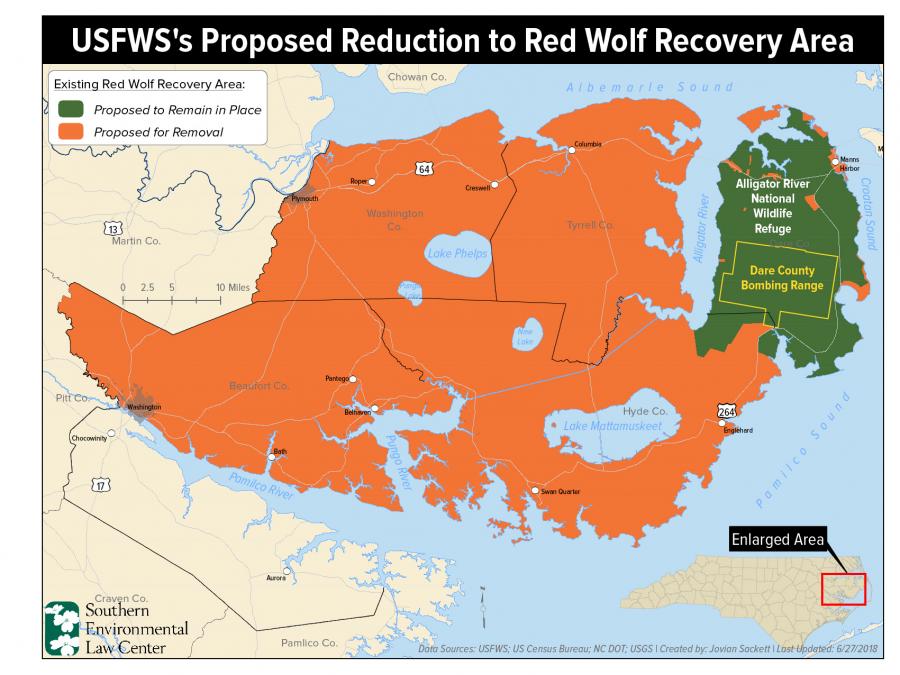Public, politicians, scientists, and conservationists oppose rule threatening red wolf recovery
The U.S. Fish & Wildlife Service’s (USFWS) proposal to drastically cut protections for the only red wolf population left in the wild drew heated opposition from scientists, politicians, concerned citizens, and conservation groups, including SELC.
This proposal would almost certainly result in the extinction of the species in the wild, leaving only a small, captive population — and ending a decades-old recovery program that once served as a model for reintroduction efforts.
The red wolf is smaller and thinner than the gray wolf. Once common throughout the Southeast, intensive predator control programs and loss of habitat drove the red wolf to extinction in the wild in the late 1970s. Later, red wolves bred in captivity were reintroduced on a North Carolina peninsula within their native range in the late 1980s. The reintroduced red wolf population peaked during the 2000’s with as many as 130-150 wolves in North Carolina.

Penned in
Wild red wolves would be relegated to an area so small many fear for their survival under a new proposal from the U.S. Fish and Wildlife Service.
Since 2014, that population has dwindled to a couple of dozen as the agency caved to pressure from a small handful of landowners, ending essential conservation measures like sterilizing coyotes and regularly releasing additional wolves to bolster the population. In addition, agency officials started removing red wolves from private lands and allowing private landowners to kill wolves that were not causing any problems.
Now Fish and Wildlife officials want to slash the protected area by nearly 90 percent, limiting the wolves to one refuge and a bombing range in eastern North Carolina while allowing hunters to kill any red wolves on non-federal lands.
In public comments submitted to the agency, the scientists who worked on the study to assess the population’s viability for USFWS say this plan is a recipe for the species’ extinction. This is the second time they have laid out this issue for the agency.
North Carolina Gov. Roy Cooper also submitted his objections to the proposal in a public comment and asked the agency to maintain the five-county recovery area and resume proven conservation measures like coyote sterilization and red wolf releases. This is the first time in recent memory that a North Carolina governor has weighed in on this issue.
“As home to the only wild red wolf population in the world,” wrote Cooper. “North Carolina is committed to the successful recovery of wild red wolves—the most endangered canid in the world.”
In comments submitted on behalf of the Red Wolf Coalition, Defenders of Wildlife, and Animal Welfare Institute, SELC also objected to the agency’s proposal and warned that the move was a blatant violation of the Endangered Species Act.
The Service’s Proposed Rule would dramatically shrink the habitat and the number of animals in the northeastern North Carolina population of red wolves, explicitly abandoning the recovery of this population and dooming it to extinction in the wild.
SELC public comments
The public is overwhelmingly opposed to the agency plan. When an early version of this rule was opened to public comment, only 10 of the 55,000 comments received supported the proposal.
The USFWS needs to listen to the scientists and other experts who convincingly argue this plan will threaten the red wolf species with extinction in the wild. The agency needs to do its job and follow the law, by making sure it does all it can to ensure the survival of this critically endangered species.
